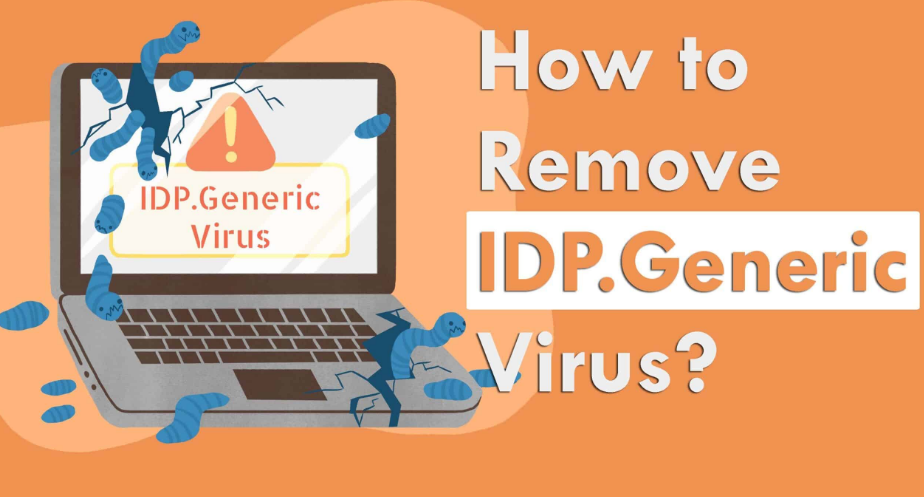IDP generics are a potential threat to your system that has been detected by the Identity Detection Protection, or IDP feature of your antivirus program. It is designed to protect your computer from viruses, malware and Trojans that can steal your personal information and data.
There are many possible infections that can be generalized as IDP. general danger. For example, a game file. If the installed anti-virus software detects it as a threat, it is very likely that the game will not be able to start. The same applies to other programs that contain files that are recognized as IDPs.
While you should always heed your antivirus program’s warnings, most idp.generic warnings are false positives. That said, you should double-check by running the scan with a different antivirus program to guarantee that it isn’t a malicious file in disguise.
The problem stems from the program’s response to the file. If it detects the idp common threat in a file needed to run another program – such as the previously mentioned Spotify Web Helper – and removes that file, Spotify may encounter glitches and other problems. could.
IDP General Meaning
As mentioned, this threat is usually classified as a false positive detection – for people who use various anti-virus software, IDP Generic is a common threat name. IDP is ‘Identity Protection‘, so when a security application detects a threat called IDP Generic, it indicates that it was detected by this component (Identity Protection), which normalized a searched file . This finding is often a ‘false positive‘.
In many cases, cybercriminals disguise malicious files as legitimate. They make their name similar to that of legitimate files, which are then not detected as threats or malicious. In this particular case, we recommend that you double-check and run the virus scan using another program. Also make sure that the installed anti-virus (or anti-spyware) software is up to date.
If not, update it and run the scan again. Check if it still recognizes the files as IDPs. General threat and if other security programs/tools detect the same file as threat. If so, it should be removed immediately. It could be a Trojan designed to spread virus and cause data/financial loss and other serious problems.
What are the Generic danger symptoms of IDP ?
Knowing about the presence of IDP is not easy. Generic virus in the system because it is normal and anything can happen. However, if your system shows one or more of the following symptoms, it may indicate the presence of an IDP.
- System keeps lagging repeatedly for no reason.
- CPU usage grows exponentially without any heavy usage.
- You are bombarded with irrelevant ads and pop-ups while browsing the internet.
- You might see some unknown apps that you don’t remember installing.
- While browsing the Internet, you may be redirected to irrelevant, untrusted websites.
How can you prevent generic IDP threats ?
These threats are usually caused by outdated software. Enable automatic updates for your antivirus software so that it is up to date at all times, and do the same for Java. This will prevent false positive warnings from AVG and Avast, so whenever an idp.generic threat appears, you know to take it more seriously.
To avoid other threats online, be careful not to open an email from an unknown sender. Avoid websites and downloads from sources you don’t trust. With a little awareness and reliable antivirus software, you can avoid most threats to your computer and personal data.
How to remove IDP Generic virus from the computer ?
After its detection, it becomes necessary to get rid of IDP.Generic from the system, as it might be anything malicious. Here are the ways to eradicate it from the device −
- Let your antivirus remove it altogether :
Since the IDP.Generic is detected by an antimalware program, you must let antimalware remove it instead of manually removing it.
- Uninstall the Suspicious Application from your device :
On your device, look for the suspicious applications or games that you don’t remember installing. One by one, remove all such programs. Note that many such programs might look authentic and useful to you.
- Delete Temporary Files from the device :
Windows OS tends to collect many unnecessary temporary files, which can be malicious and cause harm. It is recommended to delete the temporary files from the system regularly. On any Windows device, navigate to C:\Users[username]\AppData\Local\Temp to reach the temp folder and delete its contents.
Should it be ignored ?
In general, you shouldn’t ignore any warnings from your antivirus program. Now speaking of the idp generic, although most of its cases are false positives, you should not ignore it completely. We recommend using another antivirus program to see if it catches the same file or using VirusTotal. VirusTotal is a website where you can upload files and it will tell you if the file contains any malicious components. Click here and click Choose file, and then select the file that is flagged by your antivirus. Check if it flags the file. If it doesn’t then just ignore the warning and add the file to the whitelist. You should also update your antivirus program.



